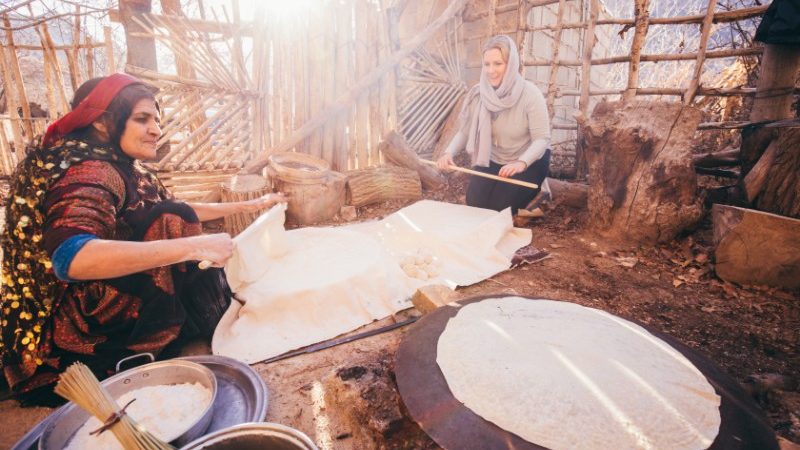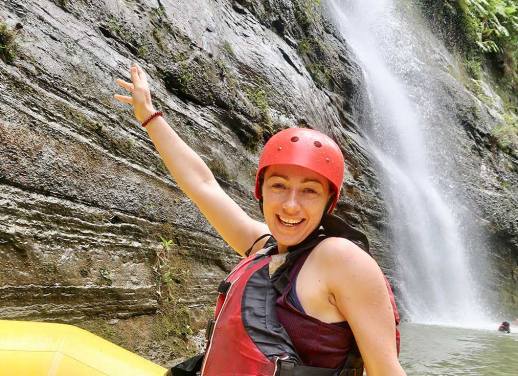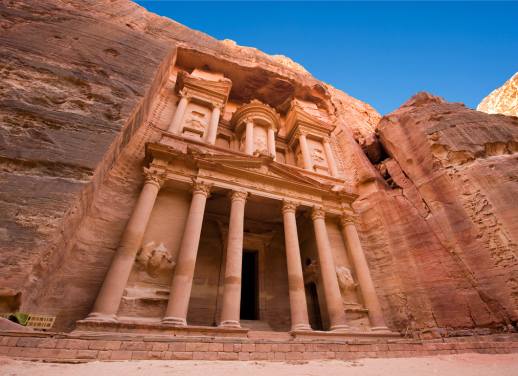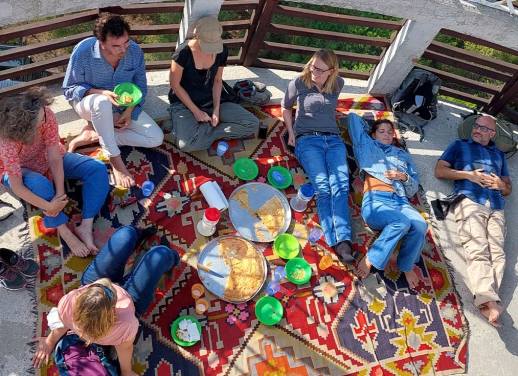The small bus judders across a dirt road, and our driver pulls over. “We’re going to have to walk from here,” our leader Maryam explains. The road is covered in ice and there’s no way the bus can make it to the top of the hill with us weighing it down.
As we pick our way past frozen puddles, the village around us is quiet. There’s a man and his sons working on the roof of one of the mud houses, but few other people to be seen.
After the hustle and bustle of Tehran and the cities around the Fars Province, where we’ve already spent almost two weeks on Intrepid’s 12-day Iran Women’s Expedition, the tiny village of Kahkaran is a silent wonder.
The quiet life
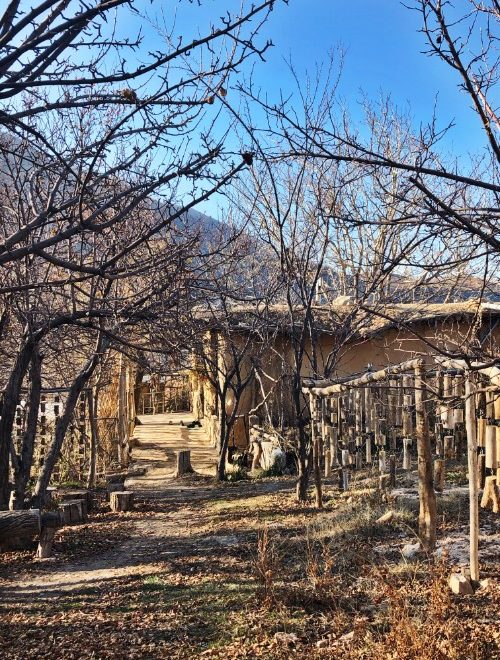 We’re on our way to the home of Mehdi and Nazila, who are to be our hosts for the evening. They and another friend, Amin, greet us at their gate. The house is surrounded by an orchard, apple trees bearing the last of the season’s fruit.
We’re on our way to the home of Mehdi and Nazila, who are to be our hosts for the evening. They and another friend, Amin, greet us at their gate. The house is surrounded by an orchard, apple trees bearing the last of the season’s fruit.
After introductions are made, we’re bustled into the house, gather in the living room, sit on the floor and tea is poured.
It’s a common theme in Iran. Whether you’re talking to artists in the markets of Esfahan or being welcomed into a family home in Shiraz, tea and sweets are always offered. And you accept them – it would be rude not to.
It takes a few moments for the ice to be broken, but soon our group is peppering Mehdi with questions about his life. His family are Qashqai nomads. Until about a century ago, they would move their homes and livestock from the south of the country near the Persian Gulf after winter to the cooler climes of the highland region near the small city of Eghlid. Their travels would take them up to 1000 kilometres as the seasons changed. They owned the land everywhere they stopped to graze their animals.
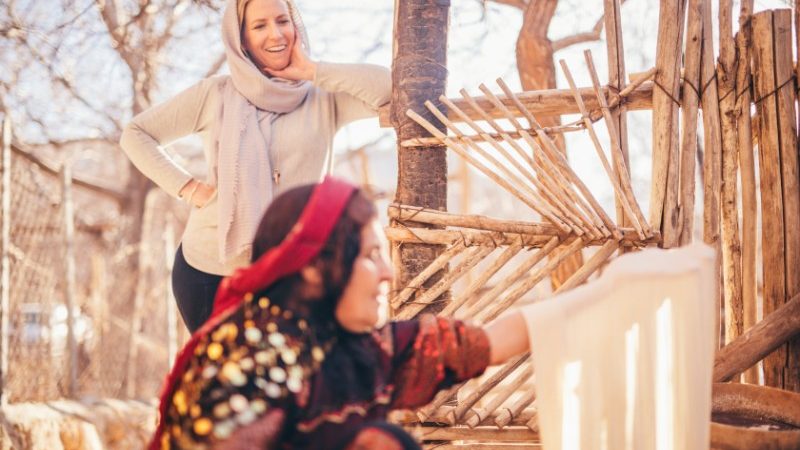 EXPLORE OUR RANGE OF IRAN TRIPS HERE
EXPLORE OUR RANGE OF IRAN TRIPS HERE
The introduction of identity cards about 100 years ago changed all that. Authorities wanted tribal people to cease moving around.
“They asked the Qashqai people to give their land back to make it national land,” Mehdi tells us. “The government then sold it and people built walls and fences so the Qashqai couldn’t move any more.” Now, about 60 per cent of Qashqui are permanently settled.
Mehdi’s father chose Kahkaran about 50 years ago, built this house and the family has lived here ever since. “I was born by that fireplace,” Mehdi says, pointing to the exact spot some of the group are sipping their tea.
RELATED: TRAVELLING TO IRAN? CHECK OUT OUR PACKING GUIDE FOR WOMEN
A village stroll
After lunch of roasted chicken stuffed with dried plums – just about everything you eat here is grown locally, and a barter system ensures shortfalls and excesses are simple to correct – we decide to take a stroll around the village.
At the front gate, a donkey trots past leading a flock of sheep up the dirt road, followed by the shepherd. At the top of the hill, we hear bells from an orchard – more sheep are grazing between the trees. A sheep dog, tail wagging and tongue lolling, gambols toward us before heading back to his charges. It really is peaceful, with the snow-capped Zagros Mountains acting as a backdrop and an absence of the sounds of modern life – there are no honking cars or revving trucks.
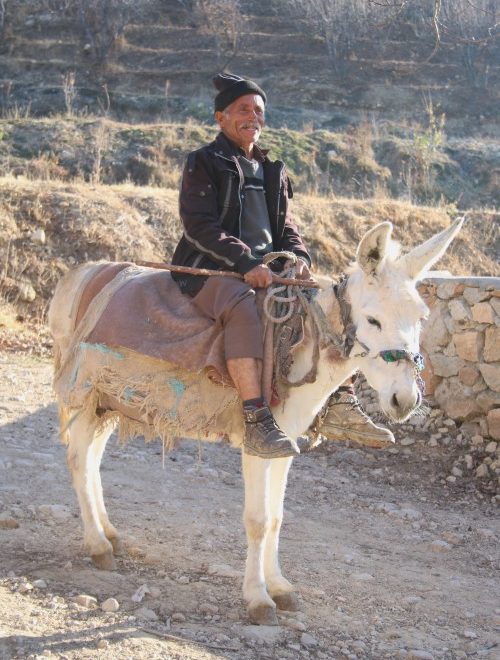
RELATED: WHAT I WISH I KNEW BEFORE MY INTREPID TRIP TO IRAN
As we drop back down the hill into the village, one of Mehdi’s students – he teaches English to the local kids aged anywhere from about five years old to their late teens – stops us. After a chat about kangaroos (a former guest had sent a copy of Mem Fox and Ronojoy Ghosh’s I’m Australian Too for them to read), she tells us her family is having a party and they’d love if we would come along. Her mum hangs out the window and gives Mehdi some details. The deal is done.
Time to party
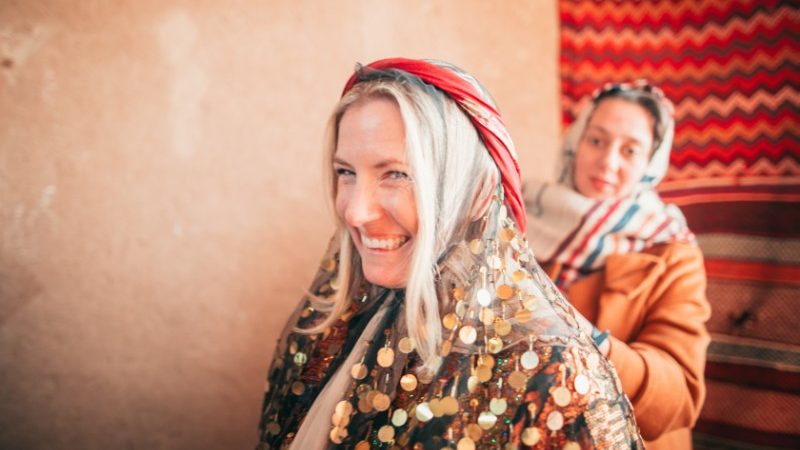 SUBSCRIBE TO INTREPID’S NEWSLETTER FOR TRAVEL STORIES, COMPETITIONS & MORE
SUBSCRIBE TO INTREPID’S NEWSLETTER FOR TRAVEL STORIES, COMPETITIONS & MORE
Back at the house, Mehdi brings a couple of fully stuffed garbage bags into the front room. “These are my mother’s,” he says, emptying the bags’ contents on to the floor. Before us are piles of beautifully coloured, embroidered and sequinned outfits. We begin pulling them on – petticoats, full skirts and long tunic tops. His mum, he assures us, wouldn’t mind.
Dressed in our Qashqai best, we walk down the dark street to be welcomed into another home. A blind man is playing an electric keyboard and another is singing. Soon, Mehdi has everyone on their feet in the middle of the room, waving scarves and performing (well, trying to perform) traditional dances. We spin around the crowded room with the other guests before taking a seat on the floor and absorb the action.
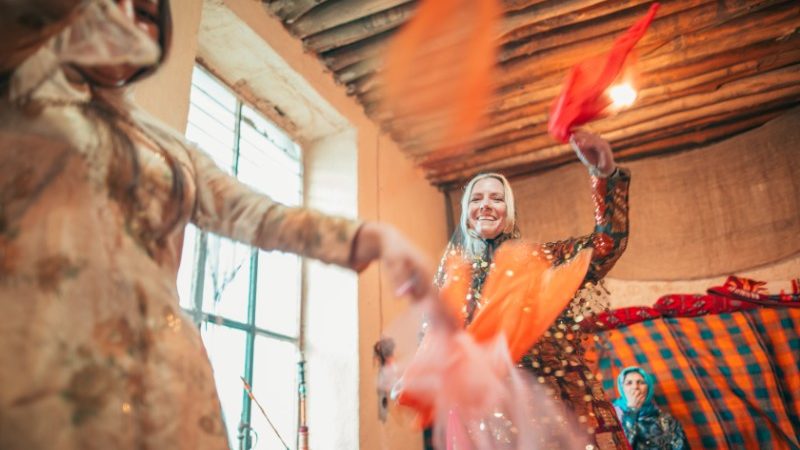
RELATED: MEET NADIA, THE INTREPID LEADER WHO WILL CHALLENGE YOUR PRECONCEIVED NOTIONS ABOUT IRAN
After an hour or so chatting to the other partygoers and clapping along to the music, we leave to a round of hugs and goodbyes. Back at Mehdi and Nazila’s home, we roll out mattresses on the floor of the room and settle in for the night, but not before reminiscing about an amazing night in Kahkaran.
Interested in exploring Iran on a women only expedition? Our 12-day Iran expedition has been designed to allow travellers a unique opportunity to discover the customs, food, challenges and lives of local women of Iran through a range of experiences otherwise off limits to our normal mixed gender groups.

